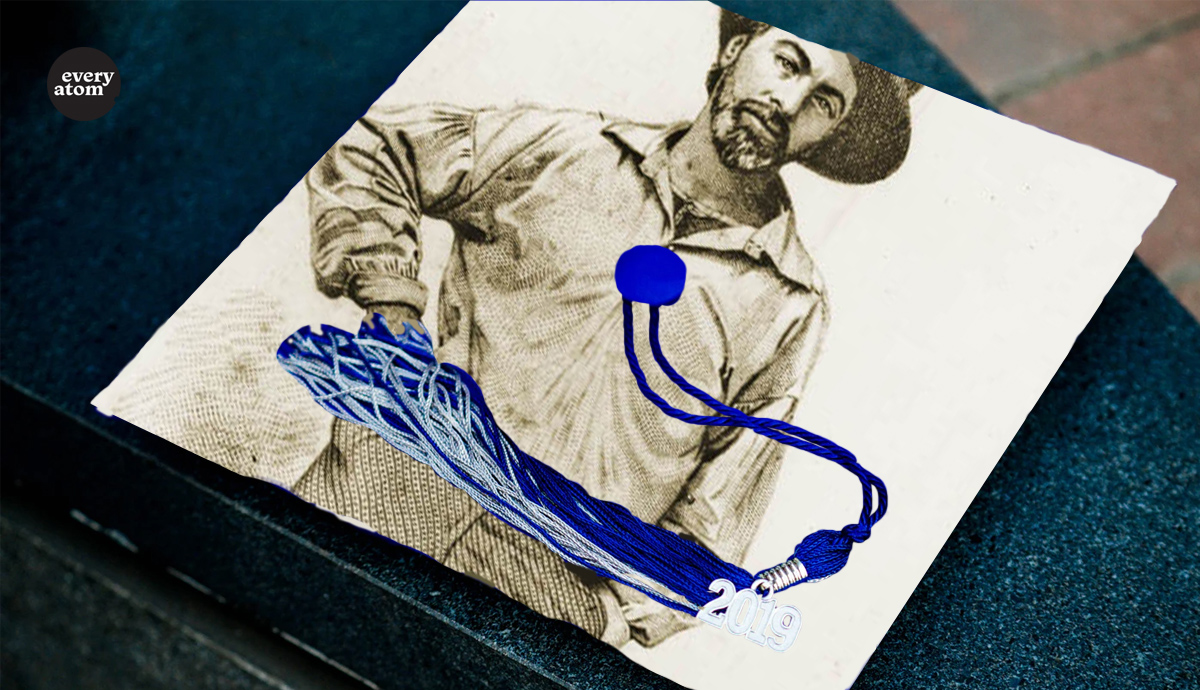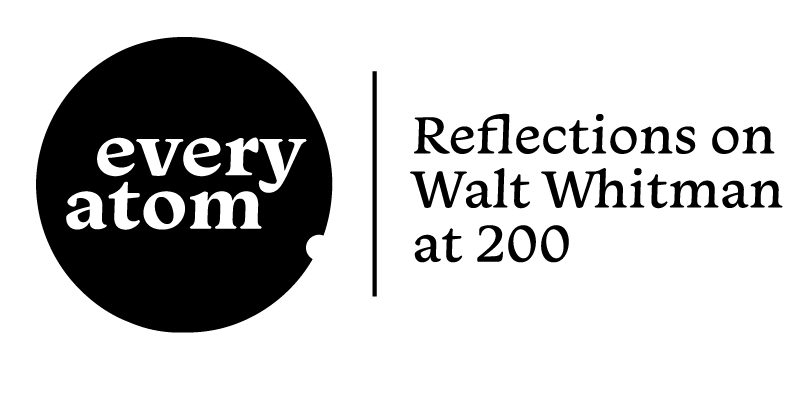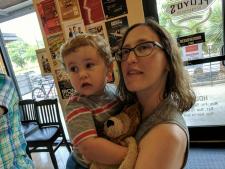Every Atom | No. 112
Introduction to Every Atom by project curator Brian Clements
Both New Yorkers. Both artists largely unnoticed in their own lifetimes. Both sporters of magnificent beards. And both inveterate thieves: ceaselessly generating new literary experiments out of scraps of borrowed ideas and forms.
But, on the occasion of their 200th birthdays, the resemblance that most endears Melville and Whitman to me is their creative engagement with the sciences. At first glance, Melville might seem Whitman’s moody foil, a dark mirror to his cheerier excesses. Yet, Melville, too, dove productively, even exuberantly, into texts of modern geology, statistics, and comparative anatomy in novels like Mardi and Moby-Dick.
As Whitman wandered Manhattan, from the scientific lecture hall to the working-class beer hall, he encountered evolutionary ideas that predated Darwin’s 1859 Origin of Species. Whitman grappled with geology’s vast time scales, evolution’s irrepressible laws of change, and found in them not, as the later nineteenth-century would, an inevitable source of despair. For the literary naturalists that followed, Darwinian evolution, especially social Darwinism, dictated the creation of characters gripped by impersonal forces. Whitman’s verse, in contrast, sought to reconcile the vibrancy and meaning of a single human life within a larger web of relationship—and responsibility.
Whitman’s lascivious embrace of what was then known as the development hypothesis finds expression in that contradictory, multitudinous, cosmic “I” that animates his verse. The poetic I that speaks for and out of evolutionary laws, that is “stucco’d with quadrupeds and birds all over.” Granted, Whitman’s “I” has more than a dash of egotism, swagger. But his grandstanding also celebrates the “procreant urge” of the universe itself.
In pre-Darwinian evolution, Whitman found the raw materials for a new kind of poetry written “with science, and con amore”: at once expansive and intimate. The scope of developmental evolution matched his poetic ambitions; it encompassed not only the evolution of species but also astronomy, embryonic development, and even social reform. Similarly, Whitman links the formation of the planets (“the nebula cohered to an orb”) with geology (“the long slow strata”) and the evolution of organic forms (“vast vegetables,” “monstrous sauroids”). He greets natural law as a source of fecundity, connection, awe. And, above all, tenderness: the human embryo sustained by early plant life, cradled by ancient marine dinosaurs.
Whitman and Melville’s careers spanned the nineteenth century, and it’s hard not to sense a foreclosure of possibility once evolution became so closely linked to the figure of Charles Darwin. The terms, and the times, had changed. In the poem Clarel (1876), Melville rues the triumph of “Darwin’s Day.” The aging Whitman, in turn, would rail, a bit feebly, at the Darwinists’ “all-devouring claims.”
Rereading “Song of Myself” on Whitman’s bicentennial, I’m struck by the poet’s stance of playfulness and curiosity across disciplinary boundaries. Whitman’s 1855 Leaves has me longing, not exactly for a return, but for a reframing of the rifts that have divided our ways of knowing about the world, divided us from each other and from the wisdom of our fellow planetary inhabitants.
Recommended
Nor’easter
Post-Op Appointment With My Father
Cedar Valley Youth Poet Laureate | Fall 2024 Workshop







